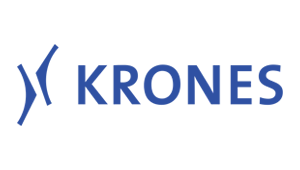Campana & Schott supports KRONES AG with the application of agile methods, and in the process significantly optimizes transparency, quality and resource use in product development.
Customer profile KRONES AG
Glass, PET or aluminum – Krones machines and equipment process millions of bottles, cans and containers every single day. Krones’ customer base consists mainly of breweries, water/soft drink and juice drink producers, as well as dairies, wine/sparkling water and spirit producers and companies in the liquid food industry.
Besides having a significant global presence, Krones also impresses with decades of experience in machine building and consumer industries, and its highly-qualified staff (16,500).
Starting situation: Rigid production development processes did not produce the desired results
The Bottling Technology Development department is a reliable partner for product development and component applications. Personnel in this department pursues a system approach and aims to provide its internal clients with integrated and low-complexity solutions. Team-oriented work approaches are used to combine mechanics, process technology and automation into a mechatronics unit, which is reflected in the machines.
The team practiced a conventional, phase-oriented product development process (PEP), but this approach repeatedly - and unintentionally - led to situations where there was not enough transparency for those in charge of the products. In addition, it frequently resulted in longer throughput times and a sub-optimal use of resources, since the interim results of the development projects took too long to come to fruition. With the goal of creating a level playing field vis-a-vis those in charge of the products, it was decided to supplement the production process with agile elements so that results can be achieved faster, the level of quality can be increased and those in charge of the products can be integrated into the process.
To this end, the company sought out a partner with extensive experience, who takes the existing teams along on the agile journey, and who consistently enhances the mindset of all stakeholders in the right direction.
Solution: Supplement the production development process with agile elements
As a management consultant, Campana & Schott assists many customers with agile transformation projects. During the collaboration with KRONES AG, it pursued three basic principles that are required for the successful introduction of agile methods.
The first important objective was to understand the needs of KRONES AG to create a common understanding of which agile areas generate benefits and which agile approaches do not promote the product development process. Building on this information, lines were drawn between the various agile methods (e.g. Scrum, XP, Crystal, Kanban), and they were also combined with “conventional” PM (plan-based PM) into hybrid PM approaches. In this way, already existing (“conventional”) structures were respected and the advantages of both worlds were merged into one.
Armed with the knowledge of the direction into which the new product development process was supposed to be expanded, the organization‘s current degree of agile maturity was measured. Interviews and group discussions were held, the focus areas were defined and the elements required to create the agile work approaches were prioritized based on the seven agile domains of the Project Management Institute (PMI). This was followed by the selection of a suitable pilot project and collaborative efforts to create an agile mindset within the team and among the stakeholders, so that each participant was aware which role must be performed with the new work approaches and how a commitment must be achieved. New skills were learned - and the elements were integrated - through daily application with the support of an agile Campana & Schott coach and were then divided into smaller interim steps. This had the advantage that organizational maturity was established gradually in manageable steps, in order to reach the target status at the end of the process.
As the benefits were realized very quickly, additional products were also gradually converted to the new work approaches, until the method was successfully applied in the entire team and by all stakeholders.
Result: A more efficient and flexible work environment
The main objective of supporting the product development process with agile practices was to actively integrate the participating stakeholders and create continuous transparency regarding the current status of development. “With Campana & Schott’s support, we were able to gradually convert our product development procedures into an agile process, which has enabled us to optimize resource use and provide those in charge of products with the requested transparency and quality,” says Holger Kahlert, Head of Central Engineering.


